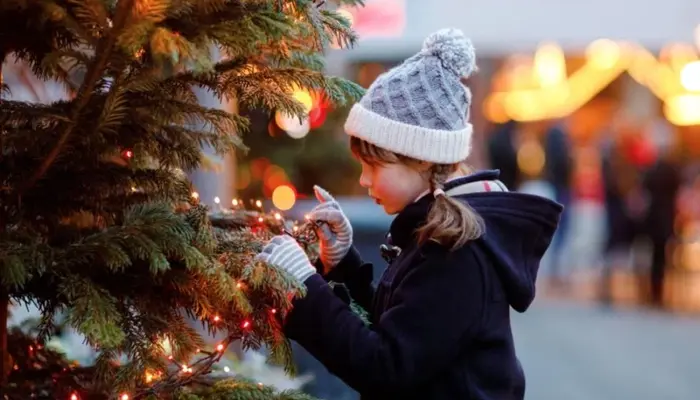
The production of climate-resilient Christmas trees has become a priority as the climate crisis threatens traditional farming methods. Rising temperatures, prolonged droughts, and extreme weather events are endangering tree survival and the industry’s future. Researchers across the U.S. are developing strategies to combat these challenges and ensure real Christmas trees remain a holiday staple.
The Impact of a Changing Climate
Christmas trees, like other crops, are vulnerable to the changing climate. Warmer temperatures, severe heat, droughts, and flooding stress these trees, making them prone to pests and diseases. According to a recent National Oceanic and Atmospheric Administration (NOAA) report, excessive rainfall causes root rot, while extreme cold damages buds and shoots.
In 2021, a severe drought in Oregon killed over 70% of Christmas tree seedlings, drying out even mature tree needles. Hurricanes like Helene in North Carolina caused catastrophic flooding, resulting in $125 million in damages to Christmas tree farms.
Adapting Through Research
To address these issues, researchers are exploring both short- and long-term solutions. Bill Lindberg, a Michigan State University Extension expert, highlights immediate practices like irrigation management and using wood chips to retain soil moisture. These methods help young trees survive during droughts.
Long-term efforts include finding tree species better suited to warmer and drier climates. For instance, breeding programs are underway to develop more resilient Christmas tree varieties. Genetic research also plays a significant role in identifying traits that can help trees adapt to new environmental stresses.
Read: Pakistan Faces Alarming Air Quality Crisis
Advances in Tree Genetics
The North Carolina State University Christmas tree genetics program has been working for decades to create “elite” Fraser firs. These trees are bred to withstand the growing threats posed by climate change. Justin Whitehill, who leads the program, explained their traditional breeding approach involves selecting trees that perform well in different climates and conditions.
Although the process can take 20 to 30 years for Fraser firs to produce cones or pollen, researchers are accelerating progress by testing existing genetics in diverse environments. They evaluate tree performance at various elevations and push forward those that adapt better to new conditions.
“Instead of letting trees adapt naturally, we identify and promote those suited to changing climates,” Whitehill explained.
Exploring Future Solutions
Genetic modification is another potential solution, but it remains in its early stages. Whitehill acknowledged that while it is being considered, it may take years to implement. For now, researchers rely on advanced breeding techniques to meet the immediate needs of the industry.
Ensuring a Green Future
Despite the challenges, Whitehill remains optimistic. “We’re not at the point where the sky is falling,” he said. Scientists are confident they can overcome these obstacles and provide solutions to sustain the Christmas tree industry.
By blending traditional methods with modern advancements, researchers aim to ensure that families can continue enjoying real Christmas trees for years to come, even in the face of a rapidly changing climate.
Follow Day News on Google News, Instagram, YouTube, Facebook, Whats App, and TikTok for latest updates











